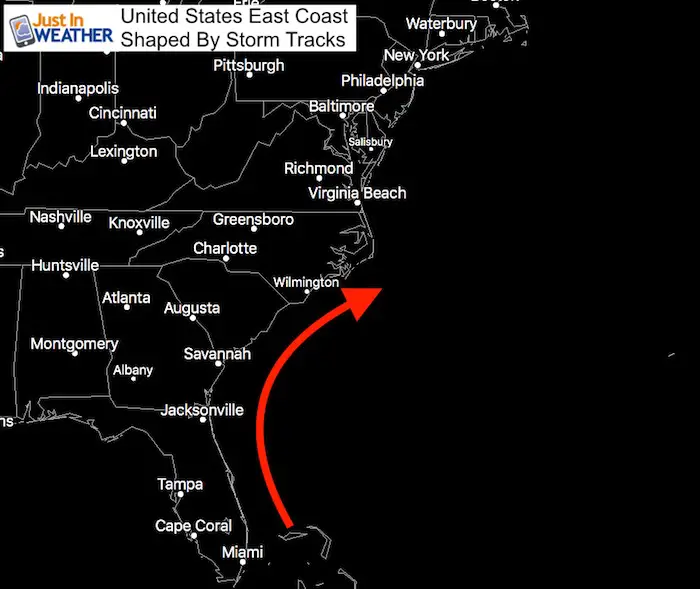

This image shows a hurricanes life cycle from the National Hurricane Center. If the water continues to be warm with little to no wind shear, the tropical storm will continue to better organize itself, becoming a hurricane when sustained winds hit 74 mph or more (however, it keeps the same name). As the depression continues to organize, the National Hurricane Center monitors satellite and hurricane hunter data (depending on where the storm is) and once sustained winds reach 39 mph within the system, it's deemed a tropical storm and given a name. Once thunderstorms begin to fire up around a center of low-level circulation, it will most likely become a tropical depression. As the cluster moves west, the warm ocean temperatures and low wind shear of the tropics can help the storms maintain themselves. Many times, hurricanes begin their life as clusters of thunderstorms moving off of Africa that have a bit of spin. Speaking of rapid intensification, let's briefly get into the life cycle of hurricanes. These storms are certainly ones to watch because the only way out is by hitting land and they typically strengthen in the warm Gulf waters. Hurricanes that travel into the Gulf are usually forced by a Bermuda High that is farther south, or winds high in the atmosphere that push it west. coast, which can help recurve tropical systems out to sea. Other times, there is a dip in the jet stream or tough over the Eastern U.S. Since high pressure spins clockwise, storms travelling north of the Greater Antilles can be guided northwest, closer to the East Coast and even making an impact.

when there is a high pressure in the Central Atlantic called a "Bermuda High" (usually centered over, you guessed it, Bermuda). continuing west towards the Gulf of Mexico.īreaking these tracks down further, hurricanes are able to go up the East Coast of the U.S. impacting the Southeast US and up the East Coast, or 3. When the storms form, they typically take 3 different tracks as they push west, 1. Hurricanes form in the tropics because the ocean water is warm (to "fuel" the storms) and usually there is limited or no wind shear to tear the storms apart (shear is the change of wind speed or direction with height in the atmosphere). This image was found at along with other maps. From there, they either recurve north or move into the Caribbean and the Gulf of Mexico, depending on steering flow. You can see many storms begin off the coast of Africa, then progress westward. This image shows every hurricane / tropical system since 1851 in the Atlantic (since 1949 in the Eastern Pacific). These are the typical paths hurricanes take moving westward across the Atlantic and Pacific. Take a look at the tropical cyclone track map below. However, it may seem a bit odd as most storms travel west to east across the United States (also totally normal for reasons we won't dive into within this blog). While this east to west movement may seem strange, it's perfectly normal for the tropics based on global circulation patterns. Many hurricanes tend to begin their stages of life in the African rainforest, then move west into the eastern Atlantic. The Atlantic hurricane season officially began Wednesday.Do you know where hurricanes originate from? In the wake of this storm, no other budding tropical features have caught the eye of AccuWeather meteorologists over the coming week. As a result, the system is rated a less than one on the AccuWeather RealImpact™ Scale for Hurricanes in Bermuda.Īs Alex continues to race northeastward into the North Atlantic, seas are expected to become less dangerous for boaters and bathers along the Eastern Seaboard of the United States and Bermuda heading into the middle of the week. In addition, the island nation captures and recycles rainwater since there are no natural reservoirs or springs, so any rain that does fall will be beneficial to the region. Strict building codes enable the island to withstand a strong tropical storm or Category 1 hurricane with minimal impact and damage. Wind gusts of 40-60 mph, with an AccuWeather Local StormMax™ of 65 mph, are expected as the storm skirts by the islands during this timeframe. Forecasters expect a general inch or two of rain across Bermuda from Sunday night through Monday, with an AccuWeather Local StormMax™ of 3 inches.


 0 kommentar(er)
0 kommentar(er)
